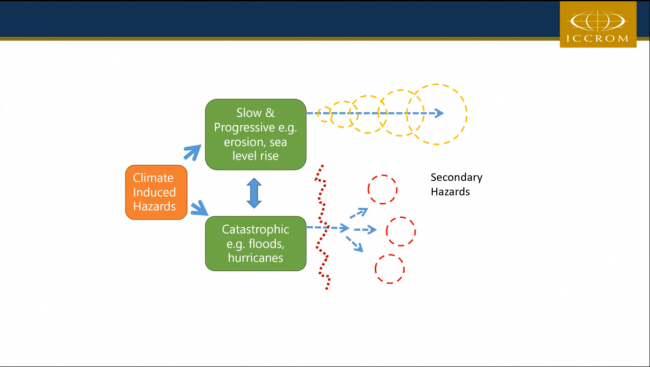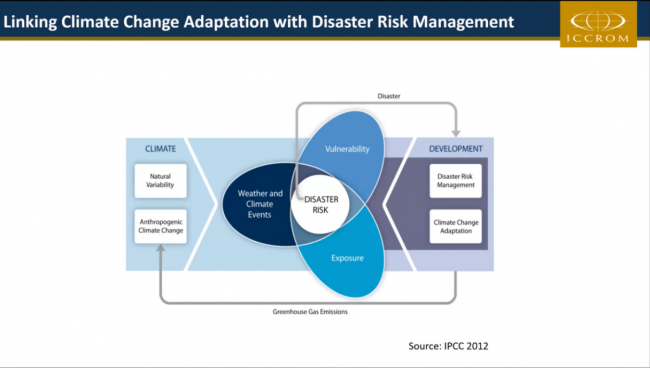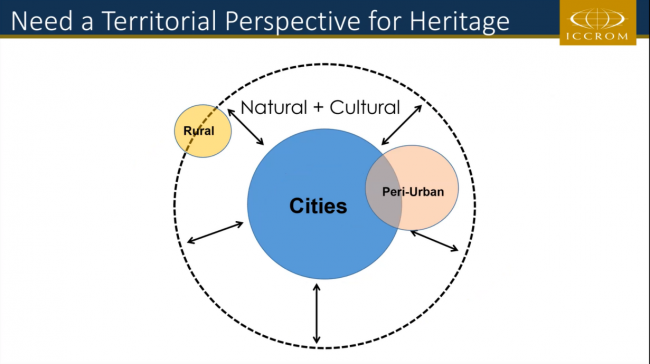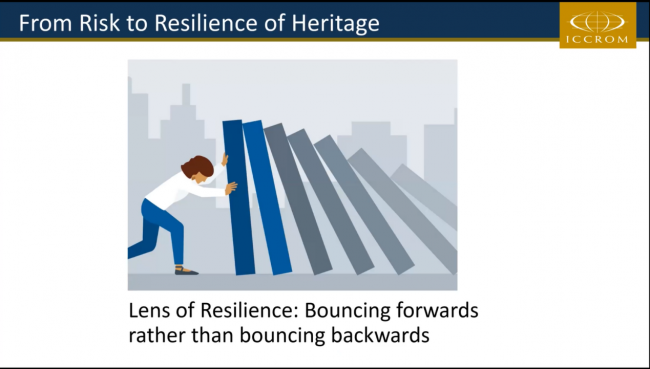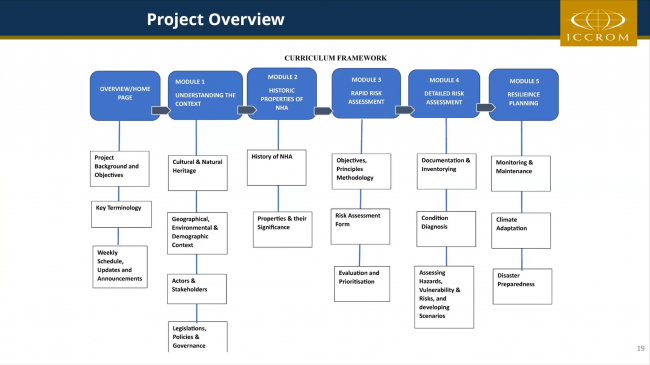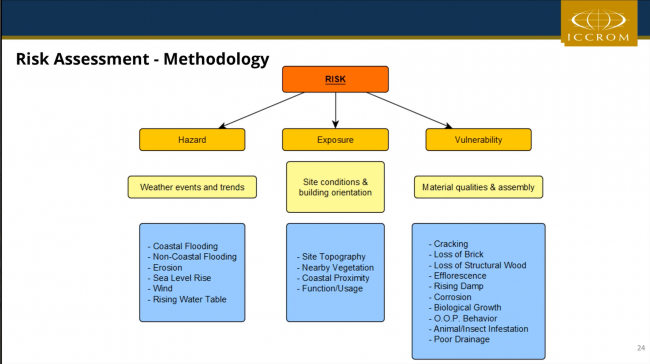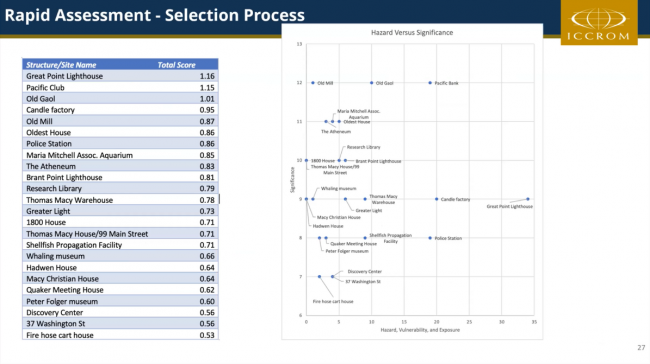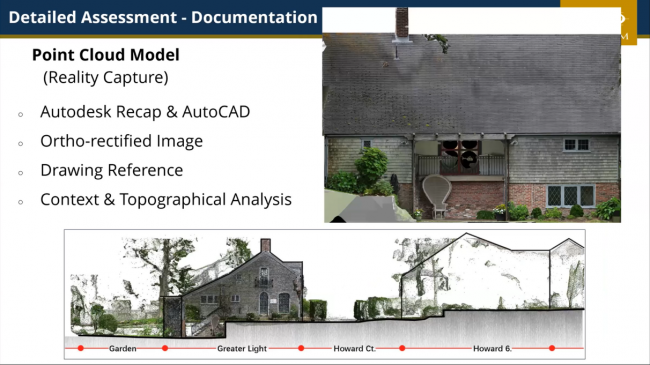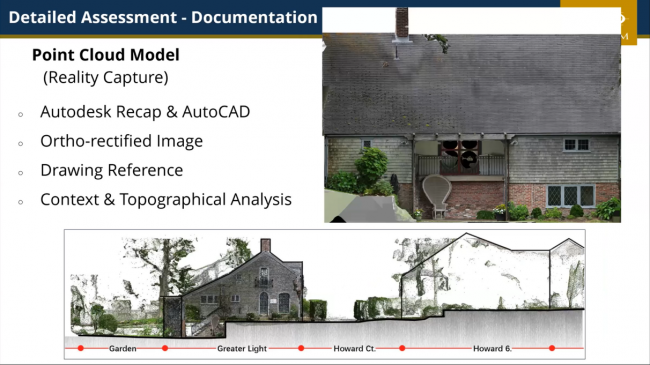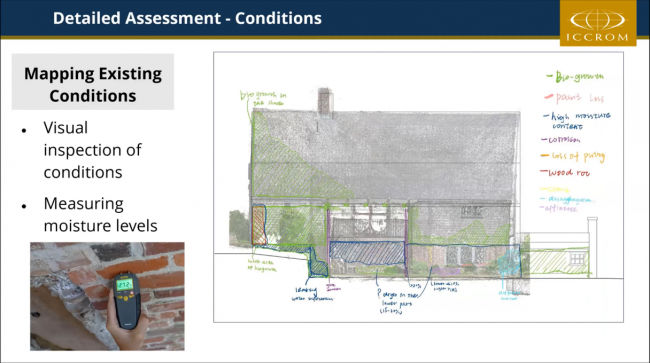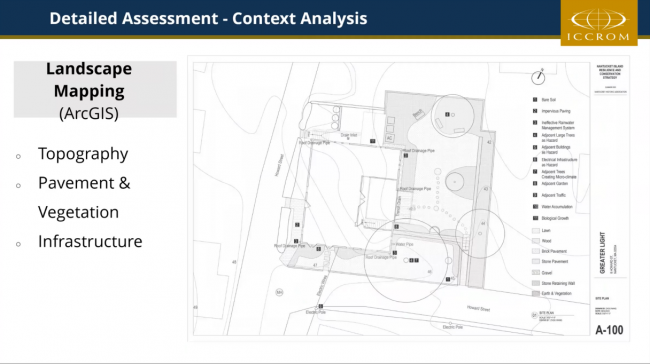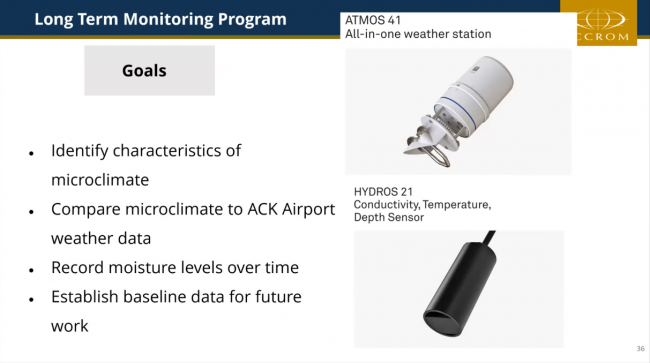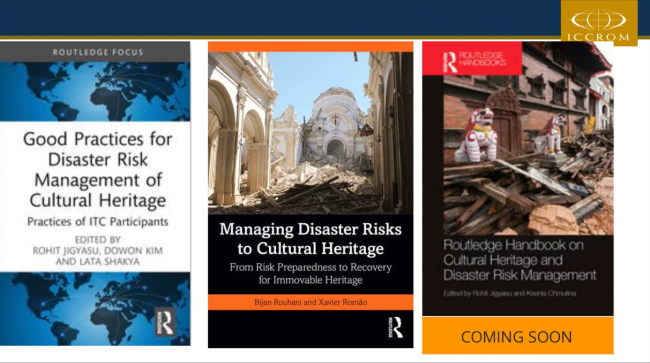| Enhance Preparedness for Effective Response: Reduce Disaster Risks and Adaptation in the Face of Climate Change |
| From:Heritap Author:Rohit JIGYASU PublishDate:2024-03-18 Hits:353 |
Background In recent years, unprecedented climate-induced disasters have been affecting heritage directly and indirectly: the huge fire in Hawaii, floods in Pakistan, Germany, Belgium and Gulf region ... Climate-induced hazards not only include catastrophic floods and hurricanes, but also refer to slow and progressive risks like erosion and sea level rise. In fact, many of these slow factors create vulnerability conditions for catastrophic events. It is necessary to think of different kinds of hazards integrally rather than separately because hazards have a combined impact on heritage.
Fig.1 Climate-induced hazards classification Besides the climate induced disasters, we are also facing the issue of rapid urbanization and unplanned sprawls that have exacerbated vulnerability conditions and impacts on heritage. With the increased number of higher density in urban areas, the city is becoming more and more dense. The uncoordinated hazard planning also affects the land use planning and other natural resources because the landscape is shaped in a way where all these resources cannot be adequately harnessed.
When we think about climate change, it is very important that we don’t think of it in isolation because climate change actually works in combination with so many other factors, such as pandemic, conflicts and economy. Linkage of Climate Change Adaptation and Disaster Risk Management The challenge today is that climate change and disaster risk management are not in the same institutions while in fact they are so much connected to each other. We need to consider the linkages between the climate variability and the anthropogenic factors which we are creating because of the way we are doing development and all these factors combined together to have effect on heritage.
Fig.2 Linking climate change adaptation with disaster risk management Mr. Rohit JIGYASU and his team have been working for a couple of years promoting the heritage place-based approach which understands not only the context within which the Outstanding Universal Values of World Heritage sites are located, but also gives people a larger understanding of the reasons why risks are created. In fact, historic urban landscape approach is advocating for the linkages between the city, its hinterland or urban areas and the rural areas. They’re so interconnected that people have to think of the city as a whole when they deal with heritage which cannot be separated from the larger context.
Fig.3 A territorial approach for heritage management Furthermore, the resilience of heritage should be thought of as “bouncing forward” instead of “bouncing back”. It is not only protecting our heritage but also taking an opportunity to reduce vulnerabilities. As a result, we and our heritage will be better prepared for the coming climate change issues. The approach of building back better is not to build a heritage again, but to make heritage stronger or less vulnerable against the different hazards.
Fig.4 Strengthening the resilience of heritage Practice of Climate and Disaster Risk Assessment In the case of Nantucket, a framework of having a comprehensive risk assessment which takes into consideration both disaster and climate risk was developed. It went from understanding the context and conducting a rapid risk assessment to a detailed risk assessment and resilience planning.
Fig.5 Framework for climate and disaster risk assessment Before conducting the risk assessment, researchers first went through the historic context and landscape context of the island. Located in the eastern coast of United States, Nantucket faces huge impact of climate change. Researchers reviewed the land use mapping and natural habitats on the island because the changing landscape leads to lots of direct and indirect impacts on heritage. By clarifying the location and significance of heritage properties, they came up with a methodology consisting hazards, exposure and vulnerability.
Fig.6 Risk assessment methodology With this methodology, researchers went towards collecting lots of information related to climate hazards from different maps and different data. Researchers then undertook three stages of assessments: rapid assessment, detailed assessment and long-term monitoring program. Researchers conducted rapid assessment survey by using online tools to have a more comprehensive picture of the overall risks of different hazards. They then used this process of quantification, coming up with prioritization of heritage sites which are at high risk, taking into consideration vulnerability and exposure as well as their significance together. After that, they worked out a deeper assessment of these sites, some of them which were at much higher risk.
Fig.7, Fig. 8 Rapid assessment Detailed assessment Researchers applied varies advanced technologies as well as traditional knowledge to make a detailed analysis of the risks. They conducted detailed assessment based on archival research, documentation, modeling, site context analysis, condition assessment and finally risk analysis. They brought together the existing conditions and landscape mapping to have a more comprehensive detail risk assessment that looks at vulnerabilities, hazards, materials, site context, conditions as well as the resulting potential impacts.
Fig. 9, Fig. 10, Fig. 11 Detailed assessment Long term monitoring program Based on the above assessments, researchers have established a long-term monitoring program. It is very essential because climate change cannot be understood with a single monitoring. It has to be a continuing process to be able to really recognize the changes.
Fig. 12 Long term monitoring program There have been several courses on disaster risk management of cultural heritage implementing the proposed approaches in Japan, Southeast Asia and other regions. ICCROM is also working on the update of the resource manual on managing disaster risks to cultural heritage, which will include heritage place-based approach and the resilience of heritage.
Fig. 13 Publications on disaster risks management of cultural heritage |
|
|
- INTERNATIONAL CONFERENCE PRELIMINARY ANNOUNCEMENT & CALL FOR PAPERS
- Observation of the 46th Session of the World Heritage Committee
- Publication | WHITRAP Newsletter No. 63
- Training Workshop on Promotion of Ecotourism in UNESCO Designated Sites held in Mongolia
- The 2024 AWHEIC winners announced at the 46th Session of WHC
- News | UNESCO’s “World Heritage and Sustainable Tourism Programme” Phase II China Pilot Studies - Yellow (Bohai) Sea Migratory Bird Habitat Phase I Training Course Successfully Held
Copyright © 2009-2012 World Heritage Institute of Training and Research-Asia and Pacific (shanghai)


